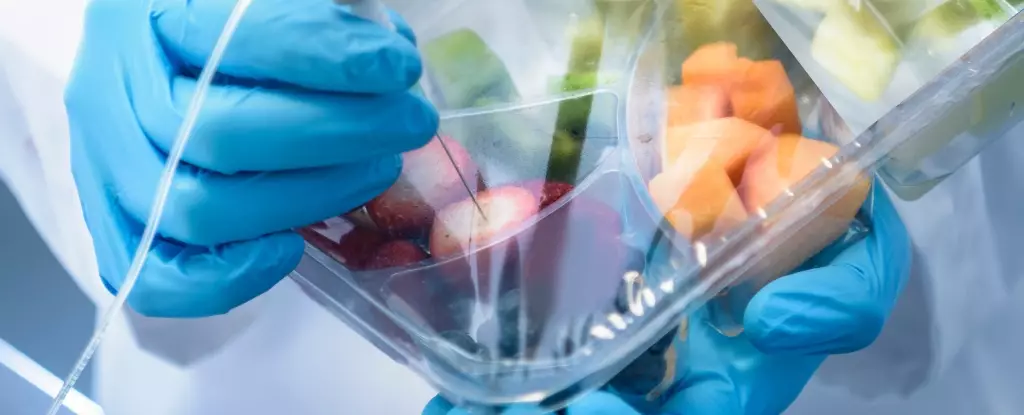A recent study has brought to light the alarming presence of over 3,600 chemicals linked to food packaging that have been detected in human bodies. This significant finding raises substantial concerns about public health and safety. The study, led by Birgit Geueke from the Food Packaging Forum Foundation in Zurich, highlights that out of the myriad of chemicals identified, approximately 100 are considered to pose a “high concern” for human health. This revelation calls into question not just the safety of food packaging materials, but also the regulatory measures surrounding them.
The researchers conducted an extensive cataloguing of food contact chemicals (FCCs)—a total of 14,000 identified substances capable of migrating into foods from packaging made from various materials. These FCCs can also originate from other areas of the food production process, such as conveyor belts and cooking utensils. With such a vast array of potential contaminants, the researchers assumed they might find a few hundred chemicals in biomonitoring databases, which track chemical prevalence in human samples. However, the discovery of 3,601 chemicals—representing a staggering quarter of all known FCCs—was far beyond what they anticipated. This unexpected finding highlights a significant gap in our understanding of the relationship between consumer products and health outcomes.
Among the identified chemicals, several are already notorious for their health repercussions. Polyfluoroalkyl substances (PFAS), often dubbed “forever chemicals,” have been linked to various health issues and are increasingly detected in human tissues. Bisphenol A (BPA), a chemical used in plastics that disrupts hormonal functions, has already faced widespread bans in baby bottles across multiple countries. Additionally, phthalates, another category of hormone-disrupting chemicals connected to infertility, were also found. However, even less is known about oligomers—byproducts of plastic creation—whose health effects remain largely unexamined.
Geueke further emphasizes that while the association between certain chemicals and health issues like hormonal disruption is concerning, the study does not clarify whether these substances originated from food packaging specifically. This crucial caveat indicates the complexities involved in tracing the source of chemical exposure, given the myriad of potential pathways for human contact.
A fundamental principle of toxicology suggests that “the dose makes the poison.” Despite this, the study was limited in its ability to ascertain whether the concentrations of the identified chemicals were particularly harmful. Geueke underscored the potential for these chemicals to interact with each other in unforeseen ways, exemplified by one sample containing as many as 30 different PFAS compounds. Such interactions may compound health risks, rendering simple assessments of toxicity inadequate.
In light of these findings, Geueke recommends consumers actively reduce their contact with these packaging materials. Avoiding the practice of heating food in its original packaging could be an effective step towards minimizing exposure to harmful chemicals.
In response to this significant research, experts urge that consumers should not be paralyzed by alarm but instead advocate for improved data collection and regulatory practices. Duane Mellor, an expert in evidence-based medicine at Aston University, highlighted the necessity for better understanding the levels of exposure to these chemicals in our environments. As discussions unfold about the future of food safety, it is crucial that such data informs policy changes to ensure public health protection.
The European Union is making strides in this area, moving towards banning PFAS in food packaging and proposing similar legislation for BPA. Such proactive measures signify a growing recognition of the risks associated with harmful chemicals in food contact materials. As research uncovers the extent of chemical exposure in our daily lives, the push for stringent regulations becomes increasingly vital for safeguarding health and well-being.
The findings from this study serve as a clarion call for heightened awareness around the presence of harmful chemicals in food packaging. As consumers, it is imperative to remain informed and cautious regarding the materials that come into contact with our food. Advocating for regulation, supporting safer alternatives, and engaging in practices that limit exposure can contribute to a healthier environment for all. With ongoing research and emerging legislation, there remains hope that we can reduce our dependence on potentially hazardous substances and create a safer food supply for future generations.


Leave a Reply